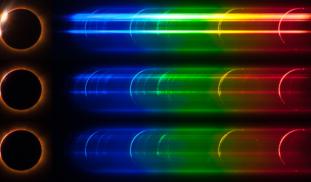518
0
0
Like?
Please wait...
About This Project
Total solar eclipses are unique opportunities to measure the value of the solar radius, a fundamental astronomical quantity, and to investigate its variability through time. Those moments when the Moon is about to fully cover the Sun provide an unparalleled view of the light emitted by the lowermost layers of the solar atmosphere, a light hidden by the Sun's glare at all other time. By analysing its spectrum (the flash spectrum), the solar radius can be estimated.


